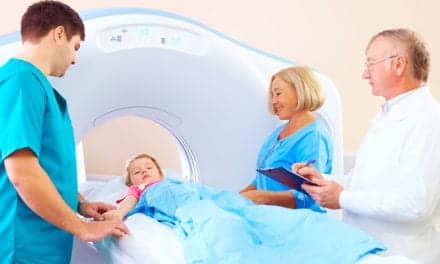
Toshiba America Medical Systems Inc’s Aquilion™ ONE dynamic volume CT system, combined with Vital Images’ CT Myocardial Analysis software, provides clinicians with images of both cardiac anatomy and function for cardiac ischemia diagnoses.
One of the most difficult aspects of cardiac imaging is compensating for cardiac motion and the resulting artifacts it produces. In an effort to alleviate these issues, Toshiba America Medical Systems Inc developed the Aquilion ONE dynamic volume CT system with Vital Images’ CT Myocardial Analysis software.
The Aquilion ONE CT system offers a detector wide enough to capture the entire heart in a single rotation, which provides clinicians with images of both cardiac anatomy and function for cardiac ischemia diagnoses.
“One of the unique features of the volume scanner is the ability to acquire the entire heart in one single revolution,” said Michael Poon, MD, professor, radiology and medicine, and director, Advanced Cardiac Imaging, Stony Brook School of Medicine. “It allowed the assessment of perfusion of the myocardium. Other scanners that require multiple rotations to get the entire image of the heart would have problems doing that consistently. The myocardial perfusion is really a very exciting area that the volume scanner will allow you to perform. Until the perfusion software became available, it was pretty much a subjective analysis of the perfusion defect.”
Poon’s facility currently utilizes the CT scanner in its emergency department. Being the only level I trauma center in the county, the scanner gets a significant amount of use. All of the facility’s low-risk chest pain patients, by protocol, are also scanned. All of this traffic causes near-constant use of the scanner.
Given that amount of usage, it all comes back to speed, for both the physicians and the patients. Poon explains that the quick image retrieval of the system shortens breath holds for patients and helps to ease the level of stress during procedures.
“Just imagine if you have a nervous patient in the emergency room,” said Poon. “A 7 second breath hold can be very long. This machine can acquire a less than 1 second breath hold. I think it is much more tolerable in an anxiety-provoking environment. We also use it in the emergency room for the pediatric population. That’s another group where you will get tremendous benefit having a wider coverage.”
The system’s speed assists physicians, too. With the single-rotation detector speed, artifacts and discrepancies on images have been significantly reduced. This ultimately leads to better image quality because radiologists will not have to spend as much time compensating for and speccing artifacts.
WEB BOX
DIGITAL EDITION PREVIEW
Want to learn more about CT? See our June digital edition for additional content.
RELATED CONTENT
Find out more about specific vendors as well as who is leading the way in CT dose reduction according to KLAS research.
To view the digital edition of IE, go to our home page
“I teach cardiac CT to other physicians, and one of the key points that I often mention is that this volume scanner, the fact that it can acquire the entire heart in one single revolution, has altered the way that I have been reading cardiac CT scans,” said Poon. “I don’t need to be thinking about speccing artifacts anymore. I think that is a tremendous improvement in eliminating some of the potential error.”
With a newfound ease of reading CT images and the ability to alleviate stress on both a burdened, busy CT machine, as well as nervous patients, the Toshiba Aquilion ONE dynamic volume CT system with Vital Images’ CT Myocardial Analysis software has helped Poon and his colleagues perform studies they would not have been able to do previously in a time frame that allows near constant utilization.
“I think the fact that the machinery can acquire the image very quickly—the entire heart image can be obtained in less than half a second—the image quality, the consistency, and the ability to handle different and challenging patients, particularly in the emergency room, are all very important factors in choosing this scanner versus another one.”





